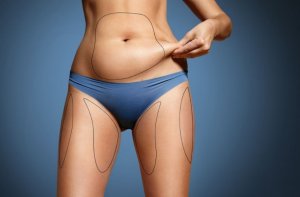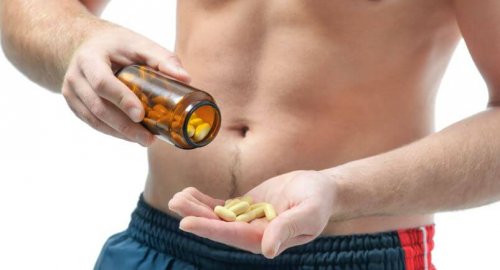How to Burn Body Fat and Maintain Muscle Mass

Aside from aesthetic reasons, there are so many health reasons for knowing how to burn body fat while maintaining muscle mass. Having a high body fat percentage raises the risks of suffering from serious health complications.
When we lose body weight, we burn fat. But we might also lose lean muscle mass that covers our muscles; we need to prevent this from happening.

Keys for burning body fat without losing muscle
Following a proper diet and exercise plan is the only way to burn fat and maintain muscle. A diet that includes fish, legumes, fruits, and vegetables, along with a daily 30-minute walk is enough to maintain your figure.
Change your lifestyle
Make changes that’ll help you live longer. Change your diet without wiping out all of your calories and find an exercise plan that you’re comfortable with. This will help you build a foundation for good habits.
Drinking water is a fundamental element for cellular activity. Water doesn’t contain any calories. Additionally, you will eat less as water makes you feel full. As for how much water you should drink, there are many opinions out there. You should consider your weight, diet, and exercise regime to calculate the quantity that you need.
Reduce your intake of starchy carbohydrates
When we commit to eliminating body fat, one of the keys to success, lies in reducing certain food elements. We’re talking about: potatoes, rice, pasta, and bread. These foods give the body more than it needs. Just one cup a day of any of these foods is more than enough.
Eat a well-balanced breakfast, comprising of one to two ounces of protein. A carbohydrate such as oats, with one piece of fruit, will ensure that you start your day with energy. You don’t need to substitute your breakfast, or any other meal, with cereal or a supplement. These supplements will only have negative consequences on your exercise.
Limit your sugar intake. Although sugar does restore your glycogen reserves after a good workout, your body stores any excess sugar as fat. You should substitute sugar for fresh fruits, in addition to swapping sugary drinks for water, coffee tea or diet drinks.
Drink black coffee before working out. Caffeine helps the body use fat instead of glucose as fuel for exercise. Getting into the habit of drinking one or two cups of coffee (no sugar, no milk) after exercising will also heighten the effects of your workout.
Don’t dramatically reduce your calorie intake. A gradual reduction is more effective. You should reduce around 200-300 calories daily with exercise. The resulting calorie deficit encourages our bodies to use fat as fuel.
Use creatine as a muscle builder
Creatine can also help to burn fat while maintaining muscle. We recommend 0.1 to 0.17 ounces of daily creatine, with food, and after exercising.
Eat more nutrient-rich vegetables too. They contain the nutrition you need, without the calories. If possible, eat five daily servings of vegetables. You can eat them as side dishes or as a main.
If you choose to use fat-burning supplements, remember that you have to follow a proper diet too. Make sure your diet contains vegetables, fiber, and healthy fats. Exercise is also important. When used correctly, supplements can help you burn more fat while maintaining muscle mass.

Three points to avoid if you want to burn body fat
- Skipping breakfast
- Failing to exercise
- Not getting enough sleep and rest
A healthy diet plan for burning fat while maintaining muscle mass needs to include: carbohydrates, proteins, and fats. You should exercise with medium to high-intensity and exercise consistently, every day or four days a week. Sleeping and rest are essential for successfully burning fat and regenerating cells.
Aside from aesthetic reasons, there are so many health reasons for knowing how to burn body fat while maintaining muscle mass. Having a high body fat percentage raises the risks of suffering from serious health complications.
When we lose body weight, we burn fat. But we might also lose lean muscle mass that covers our muscles; we need to prevent this from happening.

Keys for burning body fat without losing muscle
Following a proper diet and exercise plan is the only way to burn fat and maintain muscle. A diet that includes fish, legumes, fruits, and vegetables, along with a daily 30-minute walk is enough to maintain your figure.
Change your lifestyle
Make changes that’ll help you live longer. Change your diet without wiping out all of your calories and find an exercise plan that you’re comfortable with. This will help you build a foundation for good habits.
Drinking water is a fundamental element for cellular activity. Water doesn’t contain any calories. Additionally, you will eat less as water makes you feel full. As for how much water you should drink, there are many opinions out there. You should consider your weight, diet, and exercise regime to calculate the quantity that you need.
Reduce your intake of starchy carbohydrates
When we commit to eliminating body fat, one of the keys to success, lies in reducing certain food elements. We’re talking about: potatoes, rice, pasta, and bread. These foods give the body more than it needs. Just one cup a day of any of these foods is more than enough.
Eat a well-balanced breakfast, comprising of one to two ounces of protein. A carbohydrate such as oats, with one piece of fruit, will ensure that you start your day with energy. You don’t need to substitute your breakfast, or any other meal, with cereal or a supplement. These supplements will only have negative consequences on your exercise.
Limit your sugar intake. Although sugar does restore your glycogen reserves after a good workout, your body stores any excess sugar as fat. You should substitute sugar for fresh fruits, in addition to swapping sugary drinks for water, coffee tea or diet drinks.
Drink black coffee before working out. Caffeine helps the body use fat instead of glucose as fuel for exercise. Getting into the habit of drinking one or two cups of coffee (no sugar, no milk) after exercising will also heighten the effects of your workout.
Don’t dramatically reduce your calorie intake. A gradual reduction is more effective. You should reduce around 200-300 calories daily with exercise. The resulting calorie deficit encourages our bodies to use fat as fuel.
Use creatine as a muscle builder
Creatine can also help to burn fat while maintaining muscle. We recommend 0.1 to 0.17 ounces of daily creatine, with food, and after exercising.
Eat more nutrient-rich vegetables too. They contain the nutrition you need, without the calories. If possible, eat five daily servings of vegetables. You can eat them as side dishes or as a main.
If you choose to use fat-burning supplements, remember that you have to follow a proper diet too. Make sure your diet contains vegetables, fiber, and healthy fats. Exercise is also important. When used correctly, supplements can help you burn more fat while maintaining muscle mass.

Three points to avoid if you want to burn body fat
- Skipping breakfast
- Failing to exercise
- Not getting enough sleep and rest
A healthy diet plan for burning fat while maintaining muscle mass needs to include: carbohydrates, proteins, and fats. You should exercise with medium to high-intensity and exercise consistently, every day or four days a week. Sleeping and rest are essential for successfully burning fat and regenerating cells.
All cited sources were thoroughly reviewed by our team to ensure their quality, reliability, currency, and validity. The bibliography of this article was considered reliable and of academic or scientific accuracy.
- Gallagher, D., Heymsfield, S. B., Heo, M., Jebb, S. A., Murgatroyd, P. R., & Sakamoto, Y. (2000). Healthy percentage body fat ranges: An approach for developing guidelines based on body mass index. American Journal of Clinical Nutrition. https://doi.org/10.1093/ajcn/72.3.694
- Goodpaster, B. H., Park, S. W., Harris, T. B., Kritchevsky, S. B., Nevitt, M., Schwartz, A. V., … Newman, A. B. (2006). The loss of skeletal muscle strength, mass, and quality in older adults: The Health, Aging and Body Composition Study. Journals of Gerontology – Series A Biological Sciences and Medical Sciences. https://doi.org/10.1093/gerona/61.10.1059
This text is provided for informational purposes only and does not replace consultation with a professional. If in doubt, consult your specialist.








